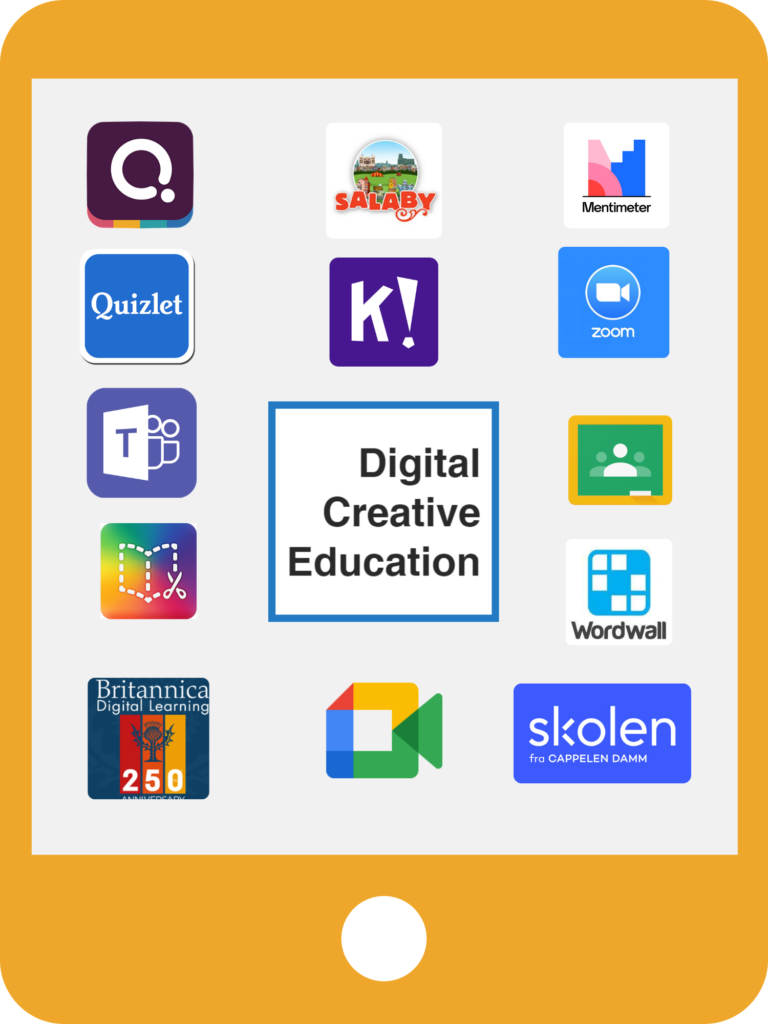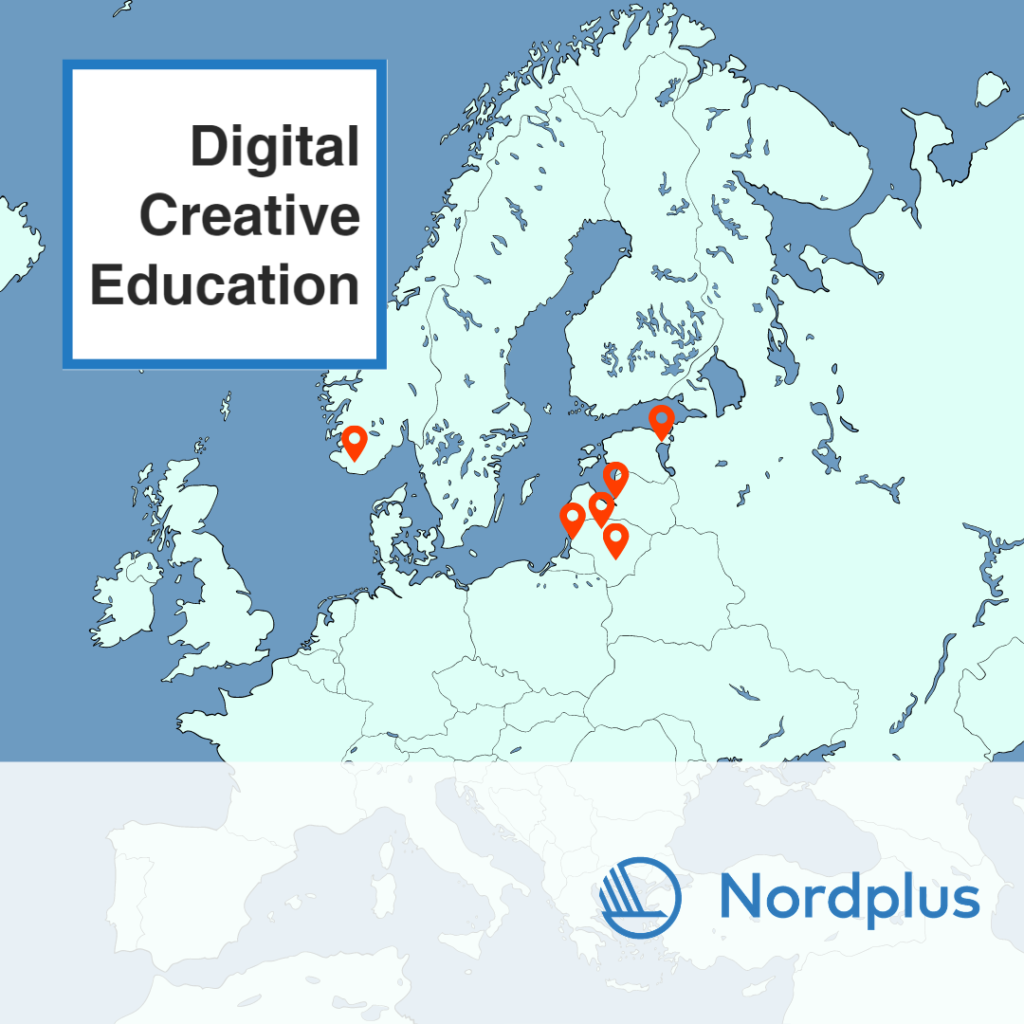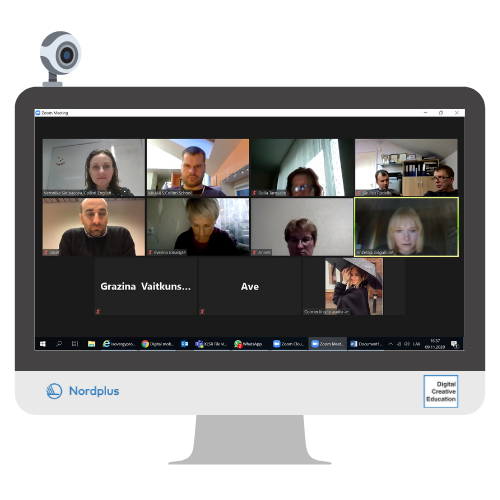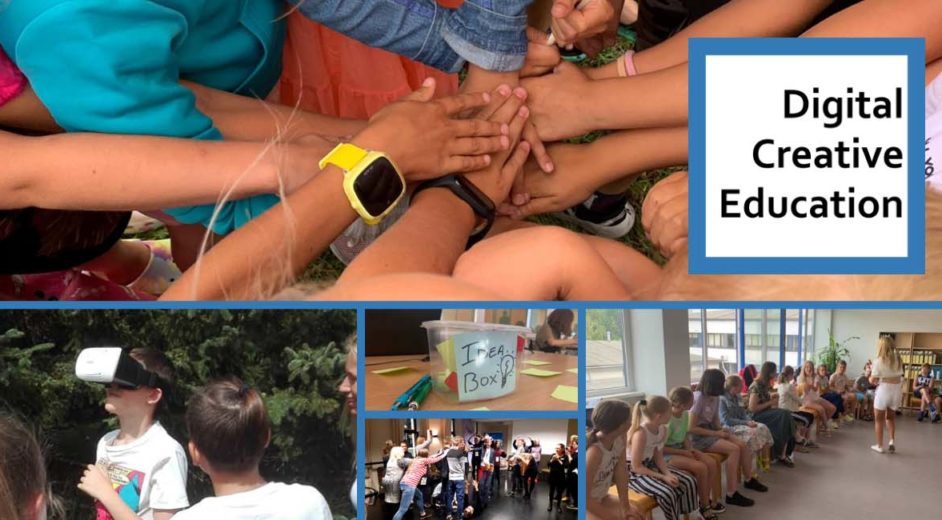Digital teaching aids create more time in the workday and open up new learning environments
A Nordplus project on digital teaching aids suddenly became strikingly relevant during the Covid-19 pandemic. Initially the goal was to examine how digital teaching aids could free up the teachers’ schedules and create new and creative solutions. This goal was reached very quickly!
By Joan Rask, journalist
Which IT systems are the safest? Are some better suited for certain situations than others? Are there any obvious pitfalls? And how can the individual teacher find the time and opportunity to get to know new tools and systems in a busy workday? These are some of the questions international coordinator at the CLIL Education Centre in Riga, Veronica Skripacova, asked herself and her colleagues.
“The idea was to improve the processes in our company and give our teachers more time and space to work with students in more creative ways. I was very frustrated that we wasted the teachers’ time on routine tasks such as tracking recording attendance, finding effective ways to see the work dynamics of a student and so on. We needed some automated processes,” she says.
In 2020 this led to the creation of the Nordplus project “Digital Creative Education” as a part of Nordplus Junior and co-coordinated by the CLIL Education Centre. Six widely different types of educational institutions from four countries became partners. Together, they created the project and a network that will help all partner institutions improve their own competencies and skills regarding digital learning environments, with a special focus on digital teachings aids, apps. etc.
And when the pandemic swept the Nordic and Baltic countries the network decided to intensify their work and complete all parts of the project. This meant that the scheduled partner meeting in Klaipeda, Lithuania, was held online.
“Our Lithuanian partner showed us videos of what they were doing at the school and we discussed any issues online. The partner meeting was very successful, considering the circumstances, because it brought us all together and made us learn from each other - even though we were all faced with a serious situation,” she explains.

One of the participants is Josef Berg, who is vice-principal at Norlights Montessori School in Stavanger. He was part of the online meeting and had high praise for it. There was a big need for digital tools before the pandemic hit, but suddenly it went from nice-to-have to a necessity.
A Montessori school builds on pedagogical principles developed by the Italian paediatrician Maria Montessori. The focus is on the development of the individual child and the whole individual, and here digital teaching really came into its own in the learning environment. Josef Berg was curious to see how the school could make sure that the children learned what they needed to digitally - but also very importantly how they learned it and how they felt - also known as the “cyber wellbeing” of the children.
“Our students need to acquire so many competencies and it requires both the teachers and the students to be involved in the digitalisation processes… There is no end to it,” he says and shrugs his shoulders almost despairingly while a big smile spreads across his face.
Josef Berg has no doubt about the many advantages digitalisation also offers, if you know how to make use of them. He has searched the school’s digital archives to find out how many times the word “digital” is used.
“There are so many…For example, students are expected to take precautions concerning digital resources, to navigate professional digital library resources and to judge the credibility and reliability of the sources, and so on and so on,” he continues to read aloud from his search results.
Everything a teacher is expected to provide their students with almost takes his breath away.
“We are definitely NOT able to define ourselves as “digitally literate” yet. This is also due to the constant changes in the field that also make it necessary to know what is going on in other places - and then maybe we can implement some of it,” says Josef Berg.
He is already pleasantly surprised by the benefits and outcomes of the Nordplus project because it has functioned as a driving force for change. Everyone also feels positively committed to both their own colleagues as well as to their new Nordic/Baltic colleagues and networks.
“Being a part of this project helps us orient ourselves towards the changes. This is important. If we only learn about it, it would not be practical and it would not become a natural part of the school culture. This is a journey for all of us, both teachers and students. We are learning and we are sharing, and that is what we need to do in order to improve our skills,” he explains.
Covid-19 lit a fire
With the Covid-19 pandemic, Veronika Skripacova and her partners were suddenly faced with an increased focus on the actual implementation of the digital tools. Now it was no longer a question of when the tools should be put to use. For many it became an actual reality where almost all teaching suddenly had to take place digitally.
“The pandemic moved the project into a deeper level of learning and we have all learned more than we ever dreamed of,” Veronika Skripacova explains.

She speaks fast. The English words come with bursts of energy and with deep engagement and a keen desire to share knowledge. She started giving English lessons to Latvian children when she was only 21 years old. Back then, she became involved in her first Nordplus project and it had a profoundly positive impact on her career.
“Back then, nobody wanted to participate in the projects because nobody knew about Nordplus. My colleagues didn’t think that I would be able to complete the first project, but I did,” she explains.
Nordplus established their first projects in the Baltic countries in 1991, and today educational institutions in the Baltic countries are equal to their Nordic partners. Veronika still carries the pioneer spirit with her from back then and she cannot emphasise enough how important international collaboration is.
“All teachers should be a part of the international work. If they are not, they are working in a bubble. Teachers who have worked at the same school for 35 years experience a different reality from teachers who have worked in other organisations and have seen other countries. I think we all need a reality check every now and again,” she says.
Reality check – people with and without disabilities
The reality that healthy students experience is very different from the reality faced by a child with disabilities. In Lithuania there is a special school for children with disabilities. At the state school Šiauliai Sanatorium School children receive their education in a safe learning environment, while also having their disability actively addressed and cared for - whether it is physical or mental. The students come from all over the country and most of them are born with their disability.
Anželika Grigaliūnė is the international coordinator at the school. Among other things, she is responsible for the seven ongoing international projects the school is currently involved in. For her, the wish to actively and efficiently learn about the new digital tools was a driving force behind getting involved in the project.
“Our school is an open, active institution and we want to be international because international partners can give us new ideas and new perspectives when it comes to the problems of everyday life,” she says.
And adds:
“It is also very nice to meet new people and learn from their experiences. This project gave us the opportunity to share a digital tool with others and learn about new ones - and to learn how to use them. There is a big difference between learning something in theory and having to try it out in real life and talk to your colleagues about it,” she explains.
A clear side effect of the pandemic and of this project is that all teachers now see the value of both the digital teaching aids and tools and of being able to speak English.
“The older teachers in particular have had some problems using the digital tools so we created a colleague-to-colleague group where I spend the afternoon teaching them about all the tools we have discovered through this project. A lot of people participate and the form of teaching makes it easier for the teachers to freely ask questions,” says Anželika Grigaliūnė.

Another important factor is the English language. Those who find it difficult to communicate with the partners and understand the English used in the tools have a harder time. There are a lot of people at the school who help the students with different tasks - also more practical and physical ones. They also need digital tools and the ability to speak English. A side effect has therefore also been that far more teachers are now signed up for English lessons next year.
Anželika Grigaliūnė is very active herself as a teacher and is happy that the project has been so well received.
“It is only the teachers who can currently participate in this project but we hope that, in the future, the network can expand so that students can participate as well,” she says.
More information:
• Digital Creative Education (project homepage)

Coordinating Institution
- CLIL Education Centre, Preschool "Flying Colours", Latvia
Partner Institutions
- Siauliai Sanatorine School, Lithuania
- Nordlights Montessori School, Norge
- Edukateka, Lithuania
- Vilnius Municipality’s Grigiškės Šviesos Gymnasium, Lithuania
- Illuka School, Estonia
Program
- Nordplus Junior
